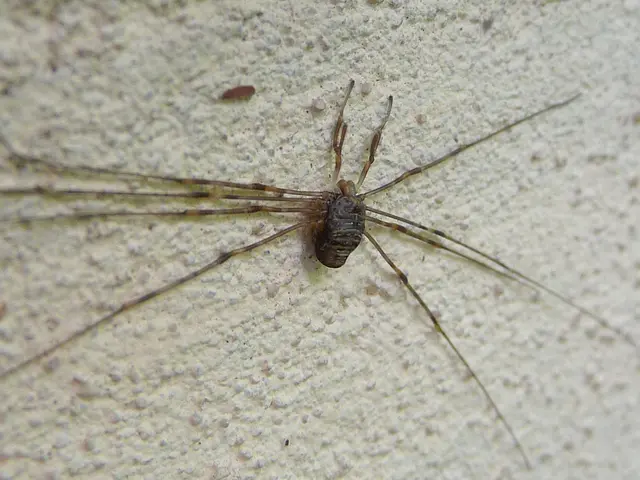Sudden, severe rosacea: Understanding causes, symptoms, and potential remedies
Rosacea Fulminans: An In-Depth Look
Rosacea fulminans is a harsh, unexpected skin inflammation issue, mainly affecting the central part of the face, including the chin, cheeks, and nose. Sometimes referred to as pyoderma faciale, this condition manifests as severe, inflamed, painful bumps that can fuse together, differing from typical rosacea or acne [1].
Causative factors are still up for debate, but one recent review hints at possible connections between rosacea fulminans and other conditions – such as inflammatory bowel disease and pregnancy [2]. Additionally, it appears that rosacea fulminans may emerge more frequently in individuals who previously experienced some type of rosacea [2].
Potential triggers of this condition include stress, hormonal fluctuations, and certain medications [1][2]. Some research also points to dietary factors, as a 2021 literature review posits that certain dietary elements might exacerbate rosacea symptoms. Possible culprits include spicy foods, alcohol, foods containing cinnamaldehyde (like chocolate, tomatoes, and citrus fruits), and histamine-rich foods (like wine, aged cheese, processed meats) [3].
Symptoms include sudden redness, swelling, inflammation, and painful bumps. Some individuals may even experience eye irritation, dryness, or sensitivity [1]. Severe cases may show systemic symptoms such as fever and fatigue, although these are rare [1].
Treatment usually consists of oral isotretinoin, a prescription-strength acne medication, and corticosteroids, prescribed orally or topically [1]. In some instances, antibiotics combined with corticosteroids and lifestyle changes may offer relief [1]. Identifying and avoiding triggers – such as reducing stress through techniques like meditation, deep breathing, exercise, and journaling, and making dietary modifications like cutting down on alcohol – might also aid in managing symptoms [1].
It's essential to discuss symptoms with a dermatologist or healthcare professional, especially if they resemble those of rosacea fulminans, such as large, tender nodules, abscesses, or significant facial discomfort. Seeking immediate medical attention can help ensure an accurate diagnosis, quick treatment, and prevent complications such as scarring and infections [1]. Early intervention may also address any emotional stress experienced by the individual, positively impacting their quality of life [1].
- Rosacea fulminans, a severe skin condition, is primarily observed on the central facial areas like the chin, cheeks, and nose. This medical condition, also known as pyoderma faciale, differs from typical rosacea or acne.
- The science behind rosacea fulminans is still evolving, with possible links to other conditions such as inflammatory bowel disease and pregnancy, as suggested by recent research.
- Managing symptoms of rosacea fulminans requires a combined approach, including oral isotretinoin, corticosteroids, and lifestyle modifications like stress reduction, exercise, and dietary modifications.
- Seeking advice from a dermatologist or healthcare professional is crucial for an accurate diagnosis of rosacea fulminans, as early intervention can prevent complications such as scarring, infections, and emotional distress. This proactive approach can significantly improve the individual's health and wellness, as well as women's health, given its impact on skin conditions.








